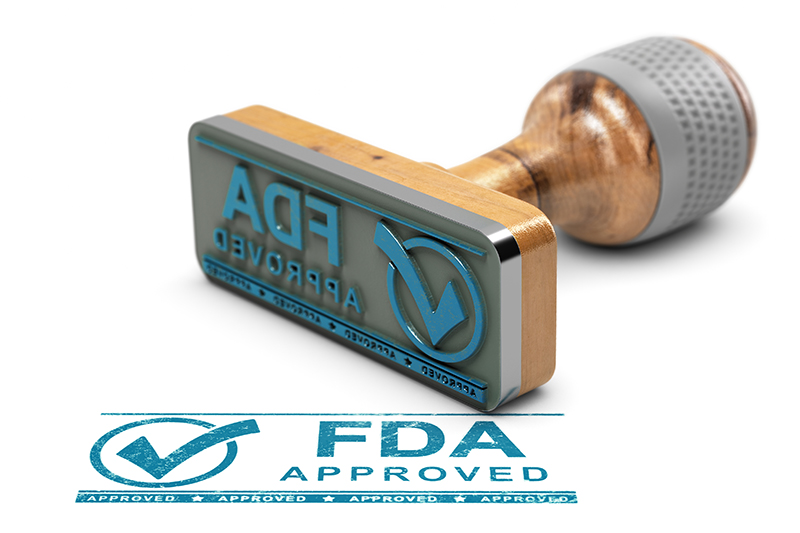As I mentioned in last week’s blog, on March 18 of this year, I submitted a Citizen Petition to the FDA requesting that the FDA Commissioner remove misleading and incorrect information presently displayed on the FDA website in a post titled “Questions and Answers on Monosodium Glutamate” (Q&A), and replace it with accurate information about monosodium glutamate (MSG) toxicity, which I supplied.
On August 16, 2021, The Glutamate Association (TGA) and the International Hydrolyzed Protein Council (IHPC) submitted comments to Citizen Petition Docket No FDA-2021-P-0301, challenging my Petition. They maintain that the Q&A accurately reflects the data and information on MSG, and that my proposed changes should be rejected.
Completely unrelated to the filing of my Citizen Petition, Kumar et al. published results of a study that looked at the relationship of dietary glutamic acid to obesity and depressive symptoms in patients with schizophrenia, and on October 24, 2021, Kahn, Sievenpiper, and Fernstrom (a long-time resource proficient in creating and spreading glutamate-industry disinformation) published a response – a criticism — of the Kumar study.
In analyzing that response, I found it to be generally characteristic of glutamate-industry propaganda, even inventing and using words and phrases that were not used in the Kumar et al. article, and then criticizing their own untruthful creative writing for containing statements that were untrue.
For those of you interested in things like fake news and scientific fraud, I have reproduced my response below, sent to the journal that published the Kahn, Sievenpiper, and Fernstrom piece, and included a question about how the journal allowed a critique, with no presentation of evidence/data, written by persons with conflicts of interest, to be published.
Adrienne Samuels
Samuels analysis of: Commentary: Dietary Glutamic Acid, Obesity, and Depressive Symptoms in Patients With Schizophrenia
Introduction
Kahn et al. (1) have criticized the article written by Kumar et al.(2), (The Article), attributing to it content that it did not have, stating as fact information that is not true, and criticizing information that is not relevant to the message of The Article.
Fabrications of content that The Article did not contain
Fabrication: “Their interpretation of the findings in non-obese individuals seems to be that ingesting dietary protein, which contains glutamate, raises blood glutamate concentrations sufficiently to cause an increase in glutamate penetration into brain, where it acts on neuronal glutamate receptors to cause depression.” [Emphasis added]
Fact: The phrase “raises blood glutamate,” the word “blood,” and the word “penetration” appear nowhere in The Article.
Fabrication: “The authors infer in their introduction that ingesting glutamate can lead directly to increases in brain glutamate levels and adversely modify brain functions via its neurotransmitter role.”
Fact: Kumar et al. state that “Data shows that over activation of the NDMA receptors by glutamate can be neurotoxic and result in cell death (5).”
Falsehoods
Falsehoods are woven into the text of the Khan et al. criticism as misleading statements, untenable suppositions, and distortions of fact.
Misleading statements
Statement: “The authors conclusions are based on a linear regression analysis…”
Fact: The authors conclusions are based only in part on a linear regression analysis.
Untenable suppositions
“In Table 1 of their paper, the BDI data appear to be non-normally distributed…”
“Furthermore, it is possible that…”
“A non-linear or threshold analysis may show interesting…”
“We believe that the conclusions based upon a linearity assumption in this paper are spurious. If the authors were to run the analysis with appropriate transformation or explore non-linear or threshold analysis using appropriate methods (6), then we surmise that…”
“A more likely path through which dietary glutamate could influence the brain is via its interaction in the alimentary canal with glutamate receptors that occur in the mouth, stomach and intestines.
Distortions of fact / misleading statements
Distortion: “Such increases in plasma glutamate are insufficient to push glutamate into brain, owing to…”
Fact: plasma glutamate has never been shown to be relevant to glutamate induced brain damage.
Distortion: ‘These cells are joined by tight junctions, and form the “blood-brain barrier” (BBB)… that prevent glutamate passage from blood into brain (16).”
Fact: I know of only one author (reference 16) who alleges to demonstrate that the blood brain barrier (BBB) prevents glutamate passage from blood into brain, while there are studies that report BBB permeability. The five studies identified here are examples. (3-7).
Distortion: “humans do not willingly consume such large amounts of pure MSG, because it tastes unpleasant (26),”
Fact: It is the free glutamate in MSG that is excitotoxic, and while the amount of free glutamate in any one ingredient may not be sufficient to cause adverse reactions or brain damage, since the 1957 change in method of MSG production, there are so many products that contain excitotoxins that it is easy for a consumer to ingest an excess of excitotoxic material during the course of a day (8-12).
When glutamic acid accumulates in quantities greater than needed for normal body function, glutamic acid becomes excitotoxic with glutamate neurotransmitter firing repeatedly at glutamate receptors until the cells associated with those glutamate receptors die.
Brain damage done by excitotoxic glutamate to the fetus and neonate, passed to the fetus across the placenta and to newborns though mothers’ milk, causes obesity and behavior disorders, and reproductive dysfunction during maturity. MSG (which contains free glutamate) can cross the placenta during pregnancy (13-15), cross the blood brain barrier (BBB) in an unregulated manner during development(16), and pass through the five circumventricular organs which are leaky at best at any stage of life (17-18). At one time it would have been meaningful to note that the excitotoxic material in a particular ingredient would not be sufficient to cause brain damage or adverse reactions. But since the 1957 change in method of MSG production, there are so many products that contain excitotoxins that it is easy to ingest an excess of excitotoxic material during the course of a day (8-12).
Information irrelevant to the subject of The Article
1) “Each antipsychotic (and antidepressant) should have been identified.… smoking should have been included as a factor in this study.”
2) The topics cited by Kahn et al. in their criticism of The Article (glutamate metabolism, the contribution of free glutamate to metabolism of glutamate, and plasma glutamate levels) as being misunderstood by Kumar et al. are topics without evidence/data relating them to glutamate-induced brain damage. None are relevant to the subject of The Article.
(Studies alleging these subjects are relevant to glutamate safety have always been sponsored by the glutamate industry.)
3) Information about taste, glutamate binding, and a distinction between protein ingestion and MSG ingestion are irrelevant to The Article.
Conflicts of interest of the critics
Sievenpiper admits working for a large segment of the processed food industry as well as the International Life Science Institute (ILSI), the International Food Information Council (IFIC), and the International Glutamate Technical Committee (IGTC), three representatives of the U.S. manufacturer of MSG.
In the face of a 1991 60 Minutes program on monosodium glutamate, the IFIC ran damage control for MSG manufacturer Ajinomoto. Prior to being exposed for inappropriate conduct, the IGTC‘s chairman designed and implemented double-blind studies claiming there was no evidence that MSG is toxic. Their “fail-safe” tactic was to use excitotoxic aspartic acid in placebos. Aspartic acid is an amino acid known to cause adverse reactions identical to those caused by the glutamate in MSG.
Fernstrom has represented the interests of the glutamate industry for more than four decades. And given the extremes to which he has gone to reinvent the article being criticized, this work gives every appearance of suffering from conflicts of interest.
Summary and conclusions
The article, Commentary: Dietary Glutamic Acid, Obesity, and Depressive Symptoms in Patients With Schizophrenia by Khan, Sievenpiper and Fernstrom is nothing but an exercise in disinformation.
References
1. Kahn TA, Sievenpiper JL, Fernstrom JD. Commentary: Dietary Glutamic Acid, Obesity, and Depressive Symptoms in Patients With Schizophrenia. Front Psychiatry. (2021) 14 October 2021 | https://doi.org/10.3389/fpsyt.2021.725786
2. Kumar P, Kraal AZ, Prawdzik AM, Ringold AE, Ellingrod V. Dietary Glutamic Acid, Obesity, and Depressive Symptoms in Patients With Schizophrenia. Front Psychiatry. (2021) Jan 21;11:620097. doi: 10.3389/fpsyt.2020.620097. PMID: 33551881; PMCID: PMC7859478.
3. Pollak TA, Drndarski S, Stone JM, David AS, McGuire P, Abbott NJ. The blood-brain barrier in psychosis. Lancet Psychiatry. (2018) Jan;5(1):79-92. doi: 10.1016/S2215-0366(17)30293-6. Epub 2017 Aug 3. PMID: 28781208.
4. 8. Vazana U, Veksler R, Pell GS, Prager O, Fassler M, Chassidim Y, Roth Y, Shahar H, Zangen A, Raccah R, Onesti E, Ceccanti M, Colonnese C, Santoro A, Salvati M, D’Elia A, Nucciarelli V, Inghilleri M, Friedman A. Glutamate-Mediated Blood-Brain Barrier Opening: Implications for Neuroprotection and Drug Delivery. J Neurosci. (2016) Jul 20;36(29):7727-39. doi: 10.1523/JNEUROSCI.0587-16.2016. PMID: 27445149; PMCID: PMC4951577.
5. Michinaga S, Koyama Y. Dual Roles of Astrocyte-Derived Factors in Regulation of Blood-Brain Barrier Function after Brain Damage. Int J Mol Sci. (2019) Jan 29;20(3):571. doi: 10.3390/ijms20030571. PMID: 30699952; PMCID: PMC6387062.
6. Gynther M, Petsalo A, Hansen SH, Bunch L, Pickering DS. Blood-brain barrier permeability and brain uptake mechanism of kainic acid and dihydrokainic acid. Neurochem Res. (2015) Mar;40(3):542-9. doi: 10.1007/s11064-014-1499-4. Epub 2014 Dec 9. PMID: 25488153.
7. Zhang C, Jiang M, Wang WQ, Zhao SJ, Yin YX, Mi QJ, Yang MF, Song YQ, Sun BL, Zhang ZY. Selective mGluR1 Negative Allosteric Modulator Reduces Blood-Brain Barrier Permeability and Cerebral Edema After Experimental Subarachnoid Hemorrhage. Transl Stroke Res. (2020) Aug;11(4):799-811. doi: 10.1007/s12975-019-00758-z. Epub 2019 Dec 12. PMID: 31833035.
8. Hashimoto S. Discovery and History of Amino Acid Fermentation. Adv Biochem Eng Biotechnol. (2017)159:15-34. https://pubmed.ncbi.nlm.nih.gov/27909736/
9. Sano C. History of glutamate production. Am J Clin Nutr. (2009) 90(3):728S-732S. https://pubmed.ncbi.nlm.nih.gov/19640955/
10. Market Research Store. Global Monosodium Glutamate Market Poised to Surge from USD 4,500.0 Million in 2014 to USD 5,850.0 Million by 2020.https://www.globenewswire.com/news-release/2016/03/17/820804/0/en/Global-Monosodium-Glutamate-Market-Poised-to-Surge-from-USD-4-500-0-Million-in-2014-to-USD-5-850-0-Million-by-2020-MarketResearchStore-Com.html (Accessed 5/29/2020.)
11. Open PR Worldwide Public Relations for Verified Market. Global Flavor Enhancers Market. https://www.bccresearch.com/partners/verified-market-research/global-flavor-enhancers-market.html (Accessed 5/29/2020.)
12. Dataintelo. Global Food Flavor Enhancer Market Report, History and Forecast 2014-2025, Breakdown Data by Manufacturers, Key Regions, Types and Application. https://dataintelo.com/report/food-flavor-enhancer-market (Accessed 5/29/2020)
13. Frieder B, Grimm VE. Prenatal Monosodium Glutamate (MSG) Treatment Given through the Mother’s Diet Causes Behavioral Deficits in Rat Offspring. Int. J. Neurosci. (1984) 23(2), 117–126. DOI: 10.3109/00207458408985353.
14. Gao J, Wu J, Zhao XN, Zhang WN, Zhang YY, Zhang ZX. [Transplacental Neurotoxic Effects of Monosodium Glutamate on Structures and Functions of Specific Brain Areas of Filial Mice.] Sheng Li Hsueh Pao. Acta Physiologica Sinica. (1994) 46(1), 44–51.
15. Yu, T.; Zhao, Y.; Shi, W.; Ma, R.; Yu, L. Effects of Maternal Oral Administration of Monosodium Glutamate at a Late Stage of Pregnancy on Developing Mouse Fetal Brain. Brain Res. (1997) 747(2), 195–206. DOI: 10.1016/S0006-8993(96)01181-X.
16. Skultetyova, I.; Tokarev, D.; Jezova, D. Stress-induced Increase in Blood-brain Barrier Permeability in Control and Monosodium Glutamate-treated Rats. Brain Res. Bull. (1998) 45(2), 175–178. DOI: 10.1016/S0361-9230(97)00335-3. [Crossref], [PubMed], [Web of Science ®], [Google Scholar]
17. Price, M. T.; Olney, J. W.; Lowry, O. H.; Buchsbaum, S. Uptake of Exogenous Glutamate and Aspartate by Circumventricular Organs but Not Other Regions of Brain. J. Neurochem. (1981) 36(5), 1774–1780. DOI: 10.1111/jnc.1981.36.issue-5.
18. Broadwell, R. D.; Sofroniew, M. V. Serum Proteins Bypass the Blood-brain Fluid Barriers for Extracellular Entry to the Central Nervous System. Exp. Neurol. (1993) 120(2), 245–263. DOI: 10.1006/exnr.1993.1059.
If you have questions or comments, we’d love to hear from you. If you have hints for others on how to avoid exposure to MfG, send them along, too, and we’ll put them up on Facebook. Or you can reach us at questionsaboutmsg@gmail.com and follow us on Twitter @truthlabeling.










